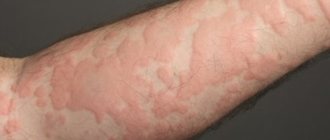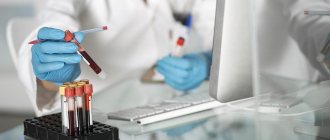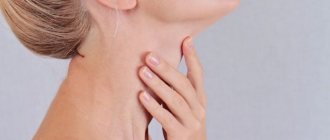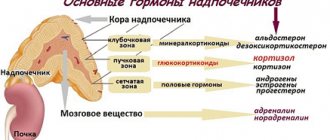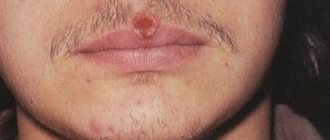Author:
Amelicheva Alena Aleksandrovna medical editor
A rash is a change in the appearance of the skin, its color, structure with localization of lesions on the face, scalp, arms, legs or, in severe cases, on the entire body.
The rash may be accompanied by itching, pain, the formation of red spots, bullae (blisters), papules (nodules), pustules (pustules), blisters, and plaques. The skin becomes dry, flaky, and when scratched, scratches, weeping, scabs or erosions may appear on the skin. Chronic itching and the addition of a secondary infection often provoke the development of foci of skin atrophy: changes in pigmentation, thinning or thickening of the skin.
The appearance of a rash may be accompanied by the following symptoms: itching, pain, fever, muscle and joint pain, headache, sleep disturbances, appetite, weight loss, general malaise, weakness, nausea and vomiting, inflammation and damage to the mucous membranes (eyes, cavities mouth, genitals).
The most common questions at a doctor’s appointment: allergic, infectious and acne rashes. It is important to understand that the cause of rashes is most often diseases - hair follicles and sebaceous glands, allergic reactions, infectious, autoimmune diseases. That is, the rash does not occur on its own, but is an external sign of pathological processes in the skin, internal organs and body systems.
Types of rash and causes of its appearance
The content of the article
A rash is a visual change in the structure and color of the skin; it is characterized by redness, itching, peeling and even pain. The halo of the rash, despite its external integrity, consists of individual elements, which include:
- ulcers (defects on the surface of the epidermis caused by slowing down the regenerative processes in the upper layers of the skin);
- erosion (superficial epithelial defect without scar formation)
- papule (dense nodule located above the surface of the skin);
- vesicle (a fluid-filled capsule located in the upper layers of the epidermis);
- pustule (a cavity formation on the surface of the skin filled with pus);
- blister (an element on the surface of the skin caused by inflammation and swelling of the papillary dermis);
- nodes (dense, painless nodules on the skin);
- hemorrhages (subcutaneous hemorrhages caused by high permeability of the vascular walls);
- petechiae (pinpoint subcutaneous hemorrhages caused by capillary injury);
- ulcers (deeply located formations filled with pus).
Depending on the location of the skin rash, the source of the problem can be determined. In particular:
- Allergic reactions cause a rash on the hands and face;
- Infections are characterized by rashes on the torso (abdomen, back);
- STIs are localized on the genitals, inner thighs and skin around the anus;
- Stress weakens the immune system, so the rash is localized throughout the body (but, unlike allergies or rashes due to infections, the reaction to allergens and immunoglobulin will be negative)%;
- Problems of the gastrointestinal tract are expressed in the form of serious skin abnormalities (with ulcerative colitis - erythema nodosum (inflammation of the subcutaneous tissue and blood vessels in the form of nodes), with problems with the pancreas - atopic dermatitis, intestinal infections provoke pyoderma - ulcers on the skin);
- Rashes due to problems with blood or blood vessels appear on the abdomen and then spread throughout the body. It is characterized by the absence of itching.
Skin allergies: symptoms
Symptoms of skin allergies may appear immediately after contact with the allergen or after some time (from 10-20 minutes to 1-2 days).
The main signs of skin allergies can be considered:
- rash (can vary significantly with different types of skin allergies);
- redness and swelling of the skin;
- itching, scratching;
- dryness and flaking of the skin.
Scratching may lead to a bacterial or fungal infection, which further aggravates the course of the disease. All this creates severe physical and psychological discomfort, disrupting sleep and affecting ability to work.
Depending on the type of allergic dermatosis, certain signs of skin allergies may be particularly pronounced or, conversely, absent.
What type of rash is typical for allergies?
Allergy skin rashes are not caused by an immune reaction of the blood to allergic elements. This is due to haptens - simple chemical compounds that are not immunogenic. But they tend to bind to the carrier protein. Attaching to a macromolecule, the newly formed complex synthesizes immunoglobulins. The body perceives it as foreign, causing an increase in the level of leukocytes. As a result, the skin becomes covered with red spots of different sizes and different locations.
An allergic rash is characterized by the following characteristics:
- It does not always cause itching and fever;
- Accompanied by swelling of the face, eyelids, runny nose;
- The area of the rash corresponds to the places where the skin comes into contact with the allergen (if you are allergic to jewelry - on the wrist or fingers, to deodorant - in the armpits, to cosmetics - on the eyelids or around the mouth);
- A blood test shows an increase in the number of eosinophils;
- The biochemical blood test remains unchanged.
The most common form of allergy rash is hives. In appearance, it resembles pink spots that appear on the skin after contact with nettles. Hives are a reaction to pollen, cosmetics, and dust. Often localized on the bends of the elbows, knees and wrists. Accompanied by severe itching and peeling of the skin.
Depending on the allergen, the rash has the following types:
- Allergy to food . It is an erythematous rash in the form of rough spots rising above the surface of the epidermis. A characteristic feature of food allergies is severe itching.
- Cold allergy . Occurs when exposed areas of skin come into contact with cold (air, water). Although cold does not directly provoke an allergic reaction, it is a trigger for an allergic reaction to improper functioning of the thyroid gland, spleen, etc. Cold allergies are accompanied by lacrimation, nasal discharge, as well as the appearance of whitish and pink, scratch-like spots on the skin, which disappear on their own after some time. If a person has ever had an allergy to cold, he needs to see a doctor to find out the true cause of the malfunction of the body.
- Allergy (atopic dermatitis) to dust/animal hair . It is often diagnosed in children. It manifests itself in the form of an itchy rash, accompanied by increased dryness of the skin. In some cases there are weeping ulcers. The simplest test to identify atopic dermatitis: take an ordinary school ruler and press on the area of the rash for 20 seconds. If a white streak remains on the skin after a few minutes, it is atopic dermatitis. If the skin has regained its previous shade, this is a rash of a different nature.
- Allergy to alcohol . Alcohol has a vasodilating effect. Accordingly, more substances, including toxic ones, are absorbed into the blood. The more components in an alcoholic drink, the stronger the allergy to it. The most “dangerous” drink is absinthe, which contains wormwood, anise, fennel, coriander, and lemon balm. The skin becomes covered with red spots, as if from burns. In chronic alcoholics who drink cheap wine every day, a red, weather-beaten face is a consequence of constant alcohol intoxication of the body. If such a reaction occurs in an ordinary person, he needs to find out the source of the allergy and consult a doctor. The biggest danger is Quincke's edema, when the lungs swell and the person dies within a few minutes.
There are 4 types of allergic rashes: food, contact, respiratory and respiratory. The biggest allergy sufferers are children. It should be remembered that not all products consumed by adults are suitable for children.
A child’s rash should not be ignored. The most dangerous is the rash caused by meningococcal infection. Outwardly, it resembles a food allergy, but at the same time the body temperature rises. It’s better to be on the safe side, and if your baby has any rash, you should consult a doctor.
Skin allergies: main causes
There are many reasons for the development of allergic dermatosis: various food allergens, medications, household chemicals, cosmetics, etc.
Skin allergies are caused by:
- Living in regions with unfavorable ecology.
- The presence of occupational hazards (prolonged human contact with aggressive objects: alkalis, acids, smoke, medications, etc.).
- Eating with a large number of allergenic foods.
- High drug load.
- Widespread use of household chemicals containing highly allergenic chemical compounds, dyes and fragrances.
- In young children, skin allergies can be triggered by early cessation of breastfeeding and early introduction of complementary foods.
Risk factors also include a hereditary predisposition to allergic diseases.
In addition, the causes of exacerbation of skin allergies can be diseases of the gastrointestinal tract, stress, etc.
Infectious rash: characteristic features and difference from allergic rashes
The distinctive features of an allergic rash are vesicles (capsules with liquid inside), papules (grain-like compactions) and pustules (bubbles with pus). An infectious rash has these symptoms.
Various infections and viruses entering the body damage, first of all, the mucous membrane, as well as the skin. Unlike an allergic rash, an infectious rash is always accompanied by an increase in body temperature.
Also characteristic signs of infection:
- body intoxication, vomiting, headache
- fast fatiguability
- phasing, spread of the rash to other parts of the body with each new day
- enlarged lymph nodes
- rashes look like papules, vesicles and pustules
- the skin dries out and flakes off.
The infection rash is not itchy, but touching it is painful. The causes of rashes are the following diseases:
- Herpes: depending on the type of virus, the skin of the face (lips) or the genitals (head of the penis, labia) are affected. The rash looks like blisters, which gradually open up and ulcers form in their place. Upon completion, a crust will form that should not be touched;
- Scabies: The causative agent is a microscopic mite that leaves tiny tunnels under the skin. Unbearable itching occurs;
- Chickenpox: The rash resembles a mosquito bite, filled with serous fluid. Vesicles spread throughout the body, including the scalp. The soles and palms remain intact;
- Scarlet fever: the rash looks like roseola - pinpoint pink spots of various shapes. After a few days, the rash fades and turns brownish. After the temperature normalizes, the skin peels and flakes. A characteristic feature is redness of the tongue and enlargement of the papillae;
- Measles: the rash looks like papules, which are localized on the inside of the cheeks and gums. The rash spreads from the neck down the back, lastly moving to the limbs. The mucous membrane of the eyes becomes inflamed;
- Rubella: the skin becomes covered with red spots, localized in the thighs and buttocks, and malaise is observed;
- Infectious mononucleosis: lymph nodes enlarge, adenoids swell. The rash is observed throughout the body, including on the roof of the mouth;
- Meningococcal infection: This is an extremely dangerous infection that can lead to the death or disability of a child. It is by the appearance of the rash that one can notice the symptoms of the disease on the first day of infection. A rash with meningococcal infection is a consequence of exposure to toxins caused by the activity of meningococcus, which increase vascular permeability. The rash is hemorrhagic in nature, that is, it looks like small hemorrhages. Mainly localized on the buttocks and limbs.
There is an effective test to distinguish meningococcal rash from other rashes. You need to take a glass, turn it over, press on the area of the rash and twist it a little until the skin around it turns white. If the skin turns pale at the site of the rash, then it is not a meningococcal infection. If the rash remains the same color, you should immediately call an ambulance.
Types of allergies on the face
If in children the most vulnerable area is the buttocks, where signs appear that indicate certain foods or unfavorable conditions, then in adults this is the nasolabial triangle, eyelids, lips, tongue, neck and hands.
Atopic dermatitis
Chronic inflammatory skin disease. Most often begins in early childhood. The priority prerequisite is genetic predisposition. It can be a concomitant disorder with bronchial asthma and conjunctivitis. There are infant, child and adult forms of the disease.
Hives
Allergies and rashes in the form of pimples on the face, the photo of which most often appears on advertising posters of the newest antihistamines, occurs with a seasonal variant. It is characterized by lacrimation, swelling of the eyelids, obsessive itching, and redness of certain areas of the body.
Food reactions can occur instantly when certain foods enter the mouth and esophagus. Most often they are milk, eggs, red or yellow fruits, and nuts. Peanuts are the most dangerous in this regard.
Contact dermatitis
Recognizable by clear zones of irritation. The causes are hygiene and cosmetic products, chemicals that come into contact with unprotected skin, jewelry, piercings, latex products, extracts and juices of certain plants. It manifests itself in the form of weeping erosions, in place of which dry scales then appear. To understand how to remove facial allergies, you need to find and eliminate the substance that causes your health to worsen. Often a good result comes from moving to another region. This way, it is possible to cut off some of the options; for the rest, you will have to take special tests in the laboratory.
Toxicoderma
A distinctive point is inflammation not due to external factors, but due to the penetration of a provoking substance into the body. In some cases, it can cause secondary damage to internal organs and anaphylactic shock, since it develops rapidly from the ingestion of an allergen from the inside. One way to prevent inflammation is to take antibiotics, especially penicillin. At the same time, timely treatment gives good results.
The alimentary variety is included in a special group; the deterioration of the condition is provoked not by products, but by food additives in their composition. It is quite dangerous due to the fact that it can occur suddenly, since manufacturers do not indicate all the ingredients in the composition.
Quincke's edema
It poses a direct threat to life. In the question of what an allergy on the face and neck looks like in this case, what to do and how to treat it, time is of the essence. Choking occurs quickly, and the slightest delay can have fatal consequences. An acute inflammatory reaction of the body, which occurs locally in the skin and subcutaneous tissue, affects deep layers, including the muscles of the respiratory system, and in a third of cases is localized in the larynx. It is impossible to prevent the development of Quincke's edema. Women suffer from this disorder more often. The diagnosis is made based on the clinical picture and requires medical attention. Signs may persist for several days and disappear gradually. Treatment includes the administration of potent antiallergic drugs. In severe cases, the patient requires urgent hospitalization in an intensive care unit or intensive care unit.
Rash caused by diseases of the blood and blood vessels
A rash due to diseases of the blood or blood vessels is caused by damage to the walls of the capillaries, as a result of which petechiae - small bright red dots - appear on the surface of the skin. Unlike ordinary hemorrhages, a rash due to blood diseases does not change color when pressed. Other signs indicate the disease:
- joint pain (knees, ankles);
- black stools, diarrhea, sharp pain in the abdomen as if poisoned;
- the rash covers the entire body.
Diseases that cause hemorrhagic rash include:
Idiopathic thrombocytopenic purpura (Werlhof's disease) is a blood disease in which small arteries and capillaries are blocked by blood clots. Mainly found in children, especially newborns. The disease has autoimmune causes of unknown etymology. Those. Your own immune cells perceive platelets as a foreign body and attack them. The rash is painless, occurs as a reaction to the administration of any medication, and is localized at the injection site.
Hemoblastosis. This is a malignant tumor that occurs very often in childhood. The rash has several types:
- hemispheres of red-brown color, covered with a crust;
- blisters with serous fluid inside;
- rashes similar to bruises, both large in size and in the form of bloody dots that appear without any reason.
In all cases, the rash causes severe itching. Blood tests for hemoblastosis show a significant increase in the number of leukocytes due to decreased immunity. Hemoglobin drops, lymph nodes enlarge. Platelet counts drop and the child gets tired quickly. The main cause of rash in diseases of the blood or blood vessels is a decrease in the number of platelets and a disruption in the synthesis of proteins involved in blood clot formation. This rash also occurs when taking medications that thin the blood (Aspirin, Warfarin, Heparin).
Diabetic angiopathy. This is a violation of the vascular capacity of the lower extremities, provoked by type 1 and type 2 diabetes mellitus. Due to the disease, the walls of blood vessels become thinner and become fragile. This causes skin dystrophy. Ulcers and erosions appear on the skin.
Publications in the media
The morphological elements of the rash are the external expression of pathological processes that occur in the skin. Depending on the time of existence, the dynamics of the inflammatory process and under the influence of other reasons (scratching, secondary infection, etc.), the rash may change its original appearance during its evolution. Therefore, it is necessary to distinguish which rashes represent a typical picture of the disease, and which are the result of their further development. There are primary and secondary morphological elements • Primary morphological elements are rashes that appear on unchanged skin. Primary elements are divided into cavity and cavityless. Cavity-free elements include a spot, a blister, a nodule, a node, and a tubercle. Cavity elements have a cavity filled with serous, bloody or purulent contents. These include vesicle, bladder and abscess • Secondary morphological elements are rashes that appear on the skin as a result of the evolution of primary elements. These include hyperpigmentation, depigmentation, scaling, erosion, abrasion, ulceration, fissure, crust, scar, atrophy, lichenification and vegetation.
Primary morphological elements of the rash
A spot (macula) is characterized by a change in the color of the skin or mucous membrane in a limited area. The density of the spot does not differ from healthy areas and does not rise above the surrounding tissues. There are inflammatory and non-inflammatory spots. Inflammatory spots are caused by dilation of the blood vessels of the skin, disappear when pressing on them with a glass slide or finger and reappear when the pressure stops. They range in color from pale pink to bluish-red. Inflammatory spots measuring 2-25 mm - roseola; 2-3 cm or more - erythema. Roseola can be circumscribed or confluent; they are the most common symptom of infectious diseases. Non-inflammatory spots are characterized by the absence of inflammatory phenomena and do not disappear with pressure. With emotional excitement, neurotic reactions, large confluent and quickly disappearing non-inflammatory spots appear - erythema of shame, anger, etc. Among the spots caused by improper development of blood vessels in the skin, the most common are hemangiomas, which are a malformation of small veins and capillaries. Spots caused by persistent non-inflammatory dilatation of skin capillaries are called telangiectasias. When the permeability of the walls of blood vessels increases or they are damaged, hemorrhagic spots appear. According to size and shape, they are usually divided into: petechiae (petechiae) - pinpoint hemorrhages; purpura - hemorrhages with a diameter of 1–2 cm; ecchymoses - hemorrhages more than 2 cm in diameter; linear hemorrhages (vibices), bruises (sugillationes). The color of hemorrhagic spots changes sequentially over 2–3 weeks from red, then blue, green, yellow, light brown, dirty gray. When pressing on hemorrhagic spots, their color does not change. Hyperpigmented spots appear as a result of the deposition of melanins in the skin. There are congenital (most often nevi) and acquired (photodermatoses, freckles, etc.) hyperpigmented spots. When the content of melanin in the skin decreases or disappears, depigmented spots appear. There are congenital depigmented spots (albinism) and acquired ones. Non-inflammatory stains include stains from artificial injection of paints (tattoos, professional stigmas).
A blister (urtica) is an acutely inflammatory, cavityless element slightly raised above the skin, ranging in size from 2-3 mm to 10 cm or more, usually disappearing quickly and without a trace. It occurs as a result of limited acute inflammatory edema of the papillary layer of the skin with simultaneous dilation of the capillaries. The developed urticarial element has a pale porcelain-white color in the center and pinkish-red along the periphery, accompanied by itching and burning. Blisters are observed with urticaria, Dühring's dermatitis herpetiformis, etc.
Papule , or nodule (papula) is a cavity-free formation of dense or soft consistency protruding above the skin level. Papules are divided into inflammatory and non-inflammatory, according to their depth into epidermal, dermal or epidermal-dermal. The size of the papules varies. There are miliary (1-1.5 mm), lenticular (2-3 mm), nummular (2-3 cm) and larger papules - plaques. The shape and outline of the papules are different. They can be flat, hemispherical, cone-shaped, polygonal, etc. The surface of the papules can be smooth or covered with scales.
A tubercle (tuberculum) is a limited and dense formation protruding above the surface of the skin from pink-red to bluish-purple, ranging in size from 1-2 mm to 10 mm. They are formed as a result of the accumulation in the dermis of an inflammatory infiltrate such as an infectious granuloma. The tubercles can disintegrate, forming an ulcer, or resolve by replacing the infiltrate with connective tissue with the formation of a scar or cicatricial atrophy of the skin in their place.
A node (nodus) is a limited dense formation with a diameter of 1 to 5 cm or more, round or oval, located in the deep layers of the dermis or subcutaneous fatty tissue. The nodes may rise above the surrounding skin or be determined only by palpation. Nodes are divided into inflammatory and non-inflammatory. Inflammatory nodes are characteristic of infectious diseases (syphilis, tuberculosis, etc.), erythema nodosum; the color of the skin over them varies from pale pink to bluish-red; Nodes of this kind most often ulcerate and end with a scar, but can resolve without leaving a trace. Non-inflammatory nodes occur with various skin tumors or as a result of the deposition of metabolic products in it.
Bubble (vesicula) is a superficial (within the epidermis) and slightly protruding above the surrounding skin cavity formation with serous or serous-hemorrhagic contents, ranging in size from 3 to 5 mm. Blisters are observed in eczema, dermatitis, lichen simplex, etc.
A bubble (bulla) is a cavity element measuring from 0.5 to 5 cm or more with serous, bloody or purulent contents. The blisters can be located under the stratum corneum, intraepidermal or subepidermal. Blisters are found in pemphigus, Dühring's dermatitis herpetiformis, acute dermatitis, etc.
An abscess (pustula) is a cavity element with purulent contents. Varieties: pustule developing around the hair follicle - folliculitis; superficial pustule not associated with the hair follicle - phlyctena; non-follicular pustule developing in the dermis - ecthyma; pustules located around the sebaceous glands - acne.
Secondary morphological elements of the rash
Skin dyschromia (dischromia cutis) is a pigmentation disorder that occurs at the site of resolved morphological elements of the rash. Hyperpigmentation appears as a result of an increase in melanin content or hemosiderin deposition in the skin. A decrease in melanin deposits in the skin causes secondary hypo- or depigmentation. Secondary hypo- or hyperpigmentation disappears without a trace.
Scale (squama) is an accumulation of rejected cells of the stratum corneum that have lost contact with the underlying epidermis. The scales can be loose, easily scraped off (psoriasis, parapsoriasis), or tightly attached to the skin (lupus erythematosus), small-lamellar (measles, pityriasis versicolor), large-lamellar (scarlet fever, toxicoderma).
Erosion (erosio) is a skin defect within the epidermis. Erosion occurs due to the opening of a vesicle, blister, or disruption of the integrity of the epithelium on the surface of the papules.
Abrasion , excoriation (excoriatio) is a skin defect that appears as a result of mechanical damage.
An ulcer (ulcus) is a deep skin defect that involves the epidermis, dermis and often underlying tissues. It develops as a result of the disintegration of such primary elements as a tubercle, node, pustule. Ulcers can also occur as a result of tissue necrosis caused by trophic disorders due to vascular changes (atherosclerosis, chronic venous insufficiency). After the ulcer heals, a permanent scar always remains in its place.
Crack (rhagas, fissura) - linear defects (tears) arising due to loss of elasticity and infiltration of individual areas of the skin. There are superficial cracks (fissurae) that develop within the epidermis and heal without a trace. And deep cracks (rhagas), involving, in addition to the epidermis, also part of the dermis, and sometimes deeper-lying tissues and leaving behind scars. Most often, cracks form in places of natural folds and in areas subject to stretching (in the corners of the mouth, above the joints, etc.).
A crust (crusta) forms on the skin as a result of the drying of the weeping surface. There are serous, purulent and bloody crusts. Their color depends on the nature of the drying discharge and the particles of dust, medicinal substances, etc. mixed with it. Crusts can be thin, flat, thick, conical, layered, dense, loose, etc. Elements of a mixed nature—crust-scales—occur in cases where exudate impregnates the scales.
A scar (cicatrix) is a coarse fibrous connective tissue growth that replaces deep skin defects. Fresh scars are pink-red in color, while older ones are hyperpigmented or depigmented. Scars can be flush with the surrounding skin, raised above it (hypertrophic scars) or sunken (atrophic scars). Cicatricial changes - cicatricial atrophy - can be observed without a previous ulcerative lesion, as a result of the replacement of infectious granulomas (with tuberculosis, syphilis) or extensive infiltrates (lupus erythematosus) with connective tissue. Unlike ordinary scars, cicatricial atrophy develops in smaller quantities and more delicate connective tissue. At the same time, the affected skin becomes sharply thinner, easily gathering into folds like tissue paper.
Lichenification (lichenificatio) - thickening, hardening of the skin, accompanied by an increase in its normal pattern, hyperpigmentation, dryness, and roughness. Lichenification is observed in neurodermatitis, chronic eczema, etc.
Vegetation (vegetatio) is formed as a result of the growth of the spinous layer of the epidermis and the papillary layer of the dermis. It is a villous-like formation that develops on the surface of papules, inflammatory infiltrates, erosions, etc. Their surface can be covered with a stratum corneum or eroded.
ICD-10 • R21 Rash and other nonspecific skin eruptions
Rash caused by digestive problems
The condition of the skin largely depends on the functioning of the internal organs. Using a map of rashes on the face, you can determine which organs have problems.
- pimples on the forehead indicate problems with the intestines;
- a rash along the hairline indicates problems with the gallbladder;
- pimples on the bridge of the nose - liver problems;
- ulcers on the temples - problems with the spleen;
- rashes above the lip - disruption of intestinal function;
- pimples on the nose - heart disease or endocrine disorders;
- rash on the chin - gynecological problems.
Rashes due to liver diseases
In the early stages of liver disease, they practically do not manifest themselves at all. The earliest symptom is specific skin rashes. They are caused by an increase in the amount of bile acid in the blood, which causes general intoxication of the body. The skin takes on a yellowish tint.
With cholestasis (blockage of the bile ducts), the rash is localized on the feet and palms, looking like marks from a burn. With cirrhosis, liver cells die and the whole body becomes covered with spots. Parasitic liver diseases cause rashes resembling hives. They are localized in the lumbar region and abdomen.
Also characteristic is a combination of rash and spider veins, which cause severe itching, which intensifies at night. Taking antihistamines (allergy medications) does not provide relief. Increased bilirubin gives the skin a yellowish tint.
Rash on the body due to sexually transmitted diseases: how is it different from a regular rash?
A common body rash due to measles, rubella, typhoid, chickenpox or allergies may look something like this:
The rash can also be divided into different categories based on its appearance. Below are the types of rashes and the diseases that cause them.
Blisters - they often appear from insect bites, nettle burns, toxicoderma. Blisters usually go away on their own and can be quickly treated with products purchased from your local pharmacy.
Spots are usually a local change in skin color, such as redness or, conversely, discoloration. Spots may appear due to dermatitis, typhus or vitiligo.
Nodules - they differ from the color of the skin, are raised and structural, measure up to 3 centimeters, and usually appear from diseases such as eczema, lichen planus, psoriasis or dermatitis.
Purpuras are skin hemorrhages that occur due to poor blood clotting, vitamin C deficiency or leukemia.
Erythremas are raised, bright red rashes that manifest themselves when you are allergic to medications, foods, or other irritants.
Blisters are the most unpleasant type of rash. They just indicate the presence of herpes, chickenpox, eczema, lichen or dermatitis.
Rashes due to intestinal diseases
If the contents of the intestines are poorly removed from the body, then some of the toxins will begin to penetrate into the blood. The body begins to get rid of poisons itself through the excretory system. Because of this, the condition of the skin worsens, and it becomes characteristic of:
- increased fat content
- dull complexion
- acne, not only on the face, but also on the back, stomach, chest
- noticeable “black dots” similar to volcanic craters
- skin becomes dry and dehydrated
- After acne heals, scars remain.
After the New Year holidays, many people note a deterioration in their skin condition and notice minor rashes that go away on their own. They are associated with contamination of the body with toxins caused by eating large amounts of heavy food.
Treatment
It is not recommended to use drugs other than antihistamines on your own. In most cases, they are enough to eliminate the main symptoms and relieve swelling. It is necessary to take into account that the action must be comprehensive and must include creams, ointments and gels to relieve external signs of the disease.
Preparations for internal use
Medicines prescribed by a doctor are divided into corticosteroid and non-hormonal. The first are produced on a hormonal basis, have a powerful effect, but have a number of serious contraindications for long-term use. The second, milder ones, are prescribed to relieve mild forms of irritation. Several generations of antihistamines are available in pharmacies. If the former, such as Suprastin, influenced the level of attention, causing drowsiness and inhibition of reactions, then Cetrin, Telfast, Claritin, with high efficiency, do not give side effects that could become a limitation for work in areas where concentration is required.
Cosmeceuticals and their help in the fight against allergies
When the body reacts violently to a stimulus, skin lesions are sure to appear, and sometimes quite unpleasant ones. These are not only rashes and pimples, but also increased dryness and microcracks. Their danger lies in the possible entry of bacteria and the development of local inflammation. The main task, along with eliminating illness, is strengthening the immune system. Cosmetic products from the medical corporation "RHANA" are used in professional problem solving, provide a quick and lasting positive effect, allowing you to maintain beauty, health and prevent premature aging. And the skin is susceptible to it if an allergic reaction often appears on the face, a photo of which clearly demonstrates the degree of damage to the integument.
In order to give a fresh look and ensure cellular renewal, it is recommended to use placental preparations:
- Modeling mask with placenta hydrolyzate GHC Placental 3D Mask withQ10. It will prevent the risk of developing inflammation and give a healthy tone.
- Concentrate serum for intensive revitalization GHC Essence will instantly restore inner radiance, and also improve microcirculation and cell nutrition.
- LNC Repairing Cream with a moisturizing effect will preserve the beauty and freshness of the skin, and also protect it from moisture loss and eliminate the regeneration of ceramides (epidermal cells).
- Placental antioxidant lotion concentrate LNC Toning Lotion will protect cells, normalize melanin production and provide optimal hydration.
The dangers of self-medication
According to preliminary forecasts, the number of people reacting to certain stimuli will reach almost 90% by the end of the century. Allergists-immunologists mention the fault of allergy sufferers themselves, who, by self-medicating, expand the range of allergens and provoke the development of other diseases. In this case, the part is fixed and passed on by inheritance. By identifying the cause and drawing up an optimal treatment regimen, you can almost completely eliminate the likelihood of regular exacerbation of allergies.
Nervous rash
Stress and nervous tension often cause skin rashes. Under the influence of a stressful situation, the immune system is suppressed. The body spends its resources to maintain the normal state of internal organs. For this reason, previously hidden diseases worsen. Also, weakened immunity provokes urticaria - a small rash similar to the reaction of the epidermis to the touch of nettles. This pathology is otherwise called nervous eczema. It, unlike a normal allergic reaction, is accompanied by the following symptoms:
- severe itching that is not relieved by antihistamines
- pulse quickens, hand tremors are felt
- restless sleep, night sweats
- panic attacks, feelings of anxiety and danger
- swelling of the face and limbs.
Typically, nervous eczema occurs after a traumatic situation or severe stress. Treating skin rashes with creams or medications does not help. Improvement comes only after the life situation normalizes. Itchy urticaria due to nervousness can be soothed by baths with sea salt, which also have a good effect on the nervous system.


